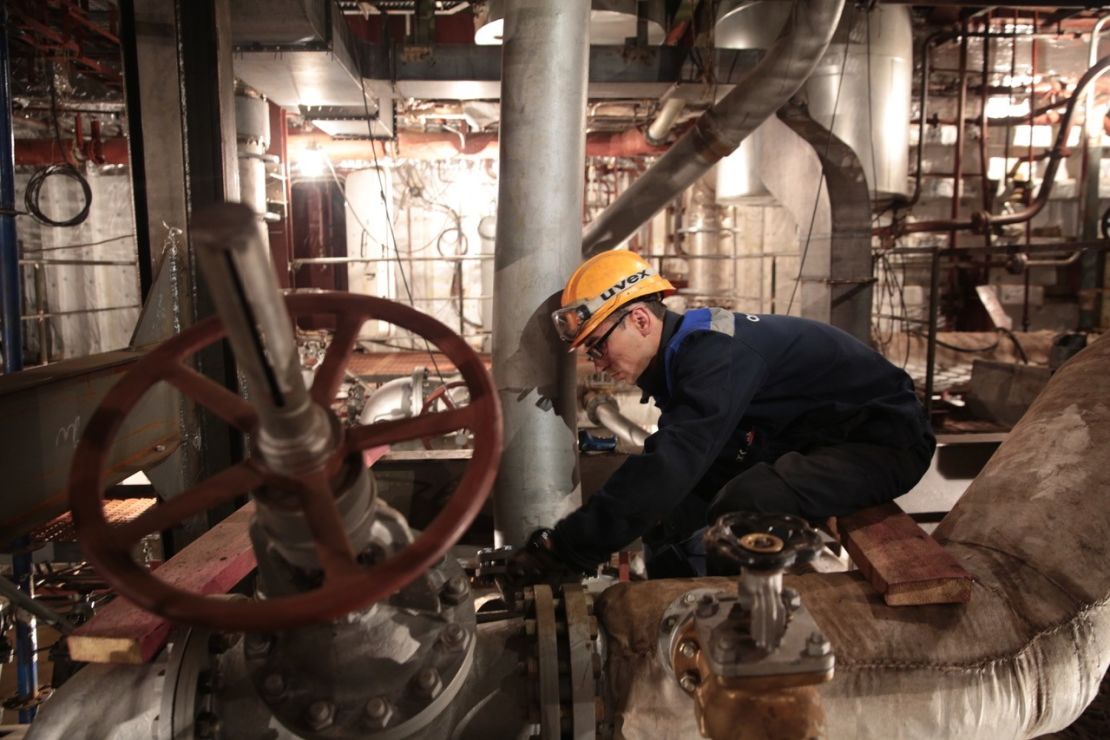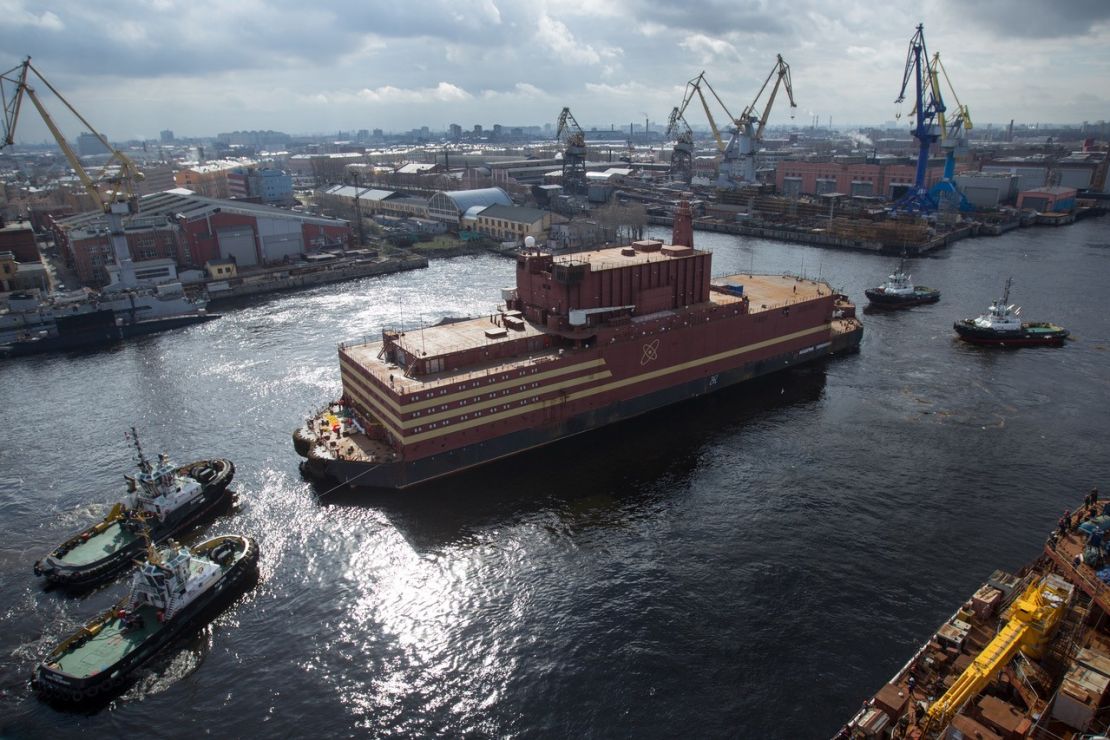Russia on Friday launched a controversial floating nuclear reactor on a nearly 3,100-mile voyage across the Arctic Sea from the port of Murmansk.
Loaded with nuclear fuel, the Akademik Lomonosov with three tug vessels is set to reach the port of Pevek in 4 to 6 weeks. But the maiden voyage comes amid concerns from environmentalists that have only heightened after a recent botched missile test which led to a radiation spike in a town in the same northern region as Murmansk.
Lomonosov is part of a plan to bring electric power to one of Russia’s most remote regions. The 144-meter (472 feet) long platform, painted in the colors of the Russian flag, is going to supply electricity to settlements and companies extracting hydrocarbons and precious stones in the Chukotka area.
A larger agenda is at work, too: aiding President Vladimir Putin’s ambitious Arctic expansion plans, which have raised concerns about a larger geopolitical contest. Likhachev, CEO of Rosatom which is in charge of the project, said at a ceremony in Murmansk that Lomonosov will “amount to a significant contribution to creating an Arctic future that is both sustainable and prosperous.”

The Akademik Lomonosov will be the northernmost operating nuclear plant in the world, and it’s key to plans to develop the region economically. About 2 million Russians reside near the Arctic coast in villages and towns similar to Pevek, settlements that are often reachable only by plane or ship, if the weather permits. But they generate as much as 20% of country’s GDP and are key for Russian plans to tap into the hidden resources as Siberian reserves diminish.
In theory, floating nuclear power plants could help supply energy to remote areas without long-term commitments – or requiring large investments into conventional power stations on mostly uninhabitable land.

But the concept of a nuclear reactor stationed in the Arctic Sea has drawn criticism from environmentalists. The Lomonosov platform was dubbed “Chernobyl on Ice” or “floating Chernobyl” by Greenpeace even before the public’s revived interest in the 1986 catastrophe thanks in large part to the HBO TV series of the same name.
Rosatom, the state company in charge of Russia’s nuclear projects, has been fighting against this nickname, saying such criticism is baseless. But Russia’s civilian nuclear industry also faced public questions following the Chernobyl catastrophe, which shaped concerns about “the peaceful atom” for decades to follow.

Construction of dozens of nuclear plants stopped, affecting not only massive Chernobyl-scale projects but also slowing down the use of low-power reactors like the one in what would become the floating station (The Chernobyl plant produced up to 4,000 megawatts. Lomonosov has two reactors producing 35 megawatts each).
Some nuclear watchdogs have pointed to another nuclear mishap, the Fukushima disaster, to highlight the risks of a seagoing reactor. The Russian plant’s main benefits – mobility and ability to work in remote regions – complicate some crucial security procedures, from routine disposal of the nuclear fuel to rescue operations in the event the platform is hit by a massive wave.

Project engineers say they’ve learned the lessons of Fukushima – and that the plant is built to withstand even a tsunami. Still, anxieties in Russia about potential radiation dangers have been raised following another, more recent, incident: A failed missile test near the village of Nyonoksa, also in Russia’s far north.
Russian authorities confirmed a brief spike in radiation from the incident, although President Putin said the incident posed no threat to the public.
